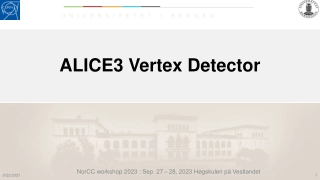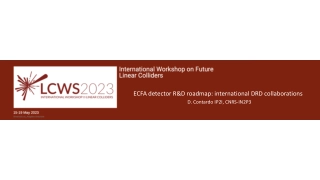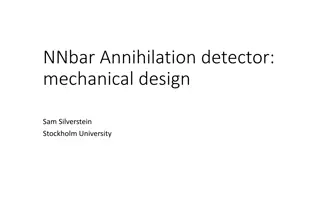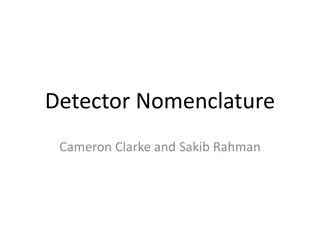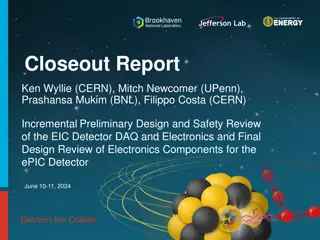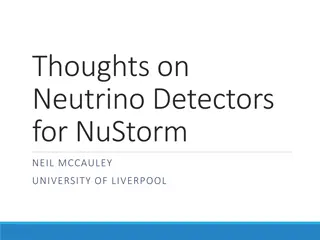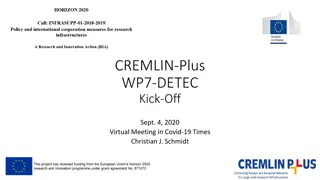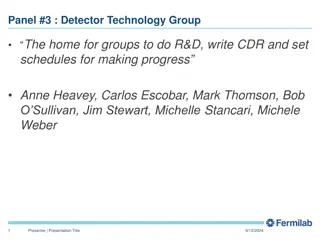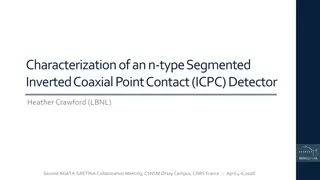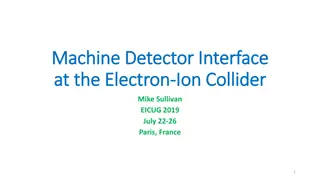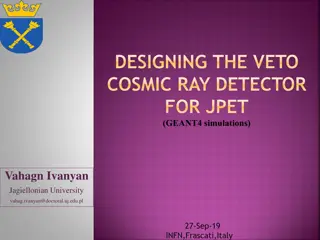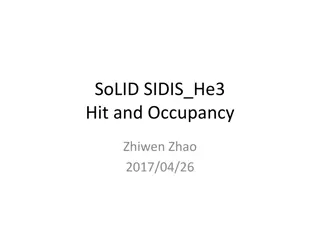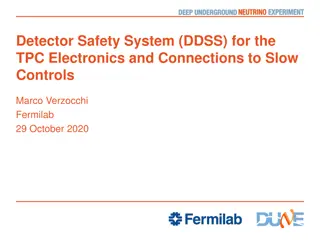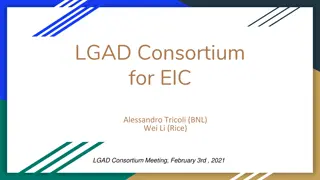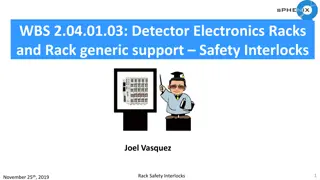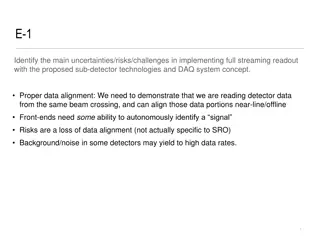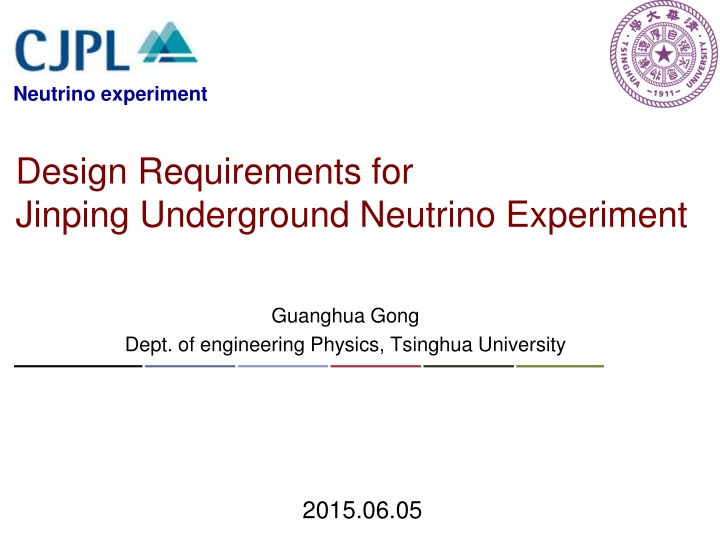
Innovative Neutrino Experiment Design Requirements at Jinping Underground Site
This project outlines the design requirements for the Jinping Underground Neutrino Experiment, focusing on physics requirements, detector concepts, target mass considerations, and major detector components. The experiment aims for a fiducial mass greater than 1Kt with an energy range of 0.1MeV to 100MeV and specific energy resolution and directionality criteria. Various detector arrangements and target material options are explored to optimize performance and efficiency. Detailed specifications for the detector components and target material characteristics are provided, showing a strong emphasis on achieving high resolution and effective particle identification.
Download Presentation

Please find below an Image/Link to download the presentation.
The content on the website is provided AS IS for your information and personal use only. It may not be sold, licensed, or shared on other websites without obtaining consent from the author. If you encounter any issues during the download, it is possible that the publisher has removed the file from their server.
You are allowed to download the files provided on this website for personal or commercial use, subject to the condition that they are used lawfully. All files are the property of their respective owners.
The content on the website is provided AS IS for your information and personal use only. It may not be sold, licensed, or shared on other websites without obtaining consent from the author.
E N D
Presentation Transcript
Neutrino experiment Design Requirements for Jinping Underground Neutrino Experiment Guanghua Gong Dept. of engineering Physics, Tsinghua University 2015.06.05
Outline Physics requirements Detector concept LS/Water/WbLS Purification system PMT Electronics/Trigger/DAQ Prototypes
Physics requirements Fiducial mass >1Kt Energy range: 0.1MeV 100MeV Energy resolution: 500 1000 PE/MeV Directionality: 20 for E> 5MeV Particle identification Cherenkov and scintillation separation Gamma vs. electron vs. alpha-proton-nuclear-recoil Calibration Energy response nonlinearity <1% Position reconstruction bias <1cm (@r=6m)
Detector(s) arrangement Option1: dual detectors Option2: single detector Depends on civil situation 2025/3/17 4
Target Mass: Sphere or Cylinder Cylinder Sphere 2025/3/17 5
Detector concept cylinder sphere
Major detector components From inner to outer Target material Acrylic vessel Water buffer PMT SS framework Black shield Veto PMT Water buffer Tyvek reflector SS vessel
Target material Assumptions PMT QE : 20% (35% for HQE PMT) Coverage: 50% ~ 80% To reach 500~1000 PE/MeV resolution, light yield of target material 2000~10000 photons/MeV
Target material : Water/LS/WbLS Target range Minfang Yeh
More information from WbLS Cherenkov lights provide direction info. for charge particles. non-solar background suppression Electron/Photon separation Cherenkov light must dominate in the 1st10 ns over scintillation light Scintillation requirement Light yield > 100ns (if S=C in 10ns) Slow scintillation light fast Cherenkov light
PMT requirements Dimension: 8 / 9 / 20 QE: >20% TTS: <5ns Related to the S/C separation Longer of WbLS will relax the requirement FWHM: <10ns Low radioactivity background Coverage: 50% ~ 80% 2500(20 ) ~ 15000(8 )
Calibration Energy response non-linearity : <1% Position reconstruction bias: <1cm (@r=6m) (6.02/6)**3 -1 = 1% Optical and radiation sources Rope loop for 4- deployment
Electronics/trigger/DAQ/DCS FADC with 1Gsps/12b readout of each PMT Patten recognition, C/S separation information reconstruction, better event quality Trigger-less scheme Self-trigger for each PMT, event selection by CPU PMT Dark noise and long scintillation lifetime Challenges for DAQ Electronics under water Better signal quality Engineering challenges seal, cable/connectors, reliability
Prototype(s) 20t 1t 20L 2014 2016 2015 30PMT + WbLS Topic: / / separation, Direction recon, particle identification 200PMT + WbLS Topic: radioactivity background PMT study, Material purification Engineering verification Cosmic with Telescope Topic: WbLS Light yield See Mohan s talk Relocate able in container
Other topics Purification Water / scintillator / nitrogen Calibration PMT protection Magnetic shielding? thermal environment / temp. control Low radioactivity materials Infrastructure and many ..
Summary CJPL-II provides great opportunity for low- background neutrino experiment. Feasible conceptual detector design, detail scenario depends on civil situation Major experimental requirements settled down Prototypes testing are under going Many aspects are not started .

